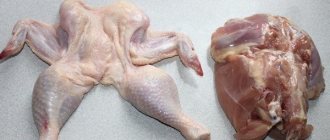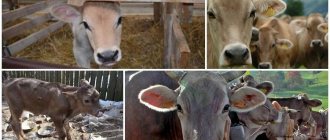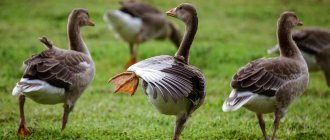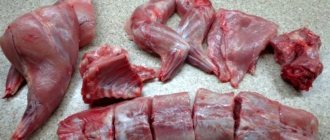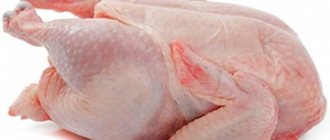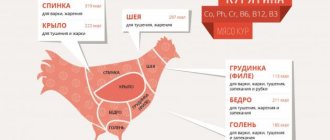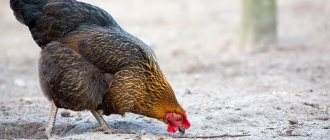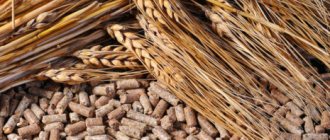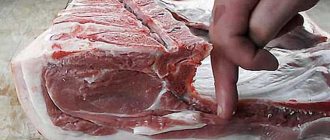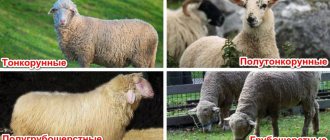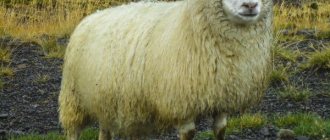Home » Articles about geese » How to slaughter a goose
The quality of the meat depends on the method of slaughtering poultry. Before slaughtering a goose, you should choose the most suitable method for yourself, acquire the necessary tools and prepare the bird in a special way.
Preparation for slaughter
Geese are slaughtered at the age of 5-6 months (in October-November). If there is not enough feed or there is no time to care for the livestock, then slaughter can begin in September (provided that the young animals have gained normal weight).
Geese begin to be actively fattened 3 weeks before slaughter, given nutritious wet mash in the morning and evening, and ready-made feed or barley in the afternoon (corn, peas, and wheat can also be used). Every day the geese should receive fresh, lush grass - the pasture is sown with cereals and legumes.
The mash is prepared in a volume that geese can eat at one time - such a mass cannot be stored. It is prepared from crushed grain mixture and liquid (whey, water, skim milk, broth) in a ratio of 1:1.5. The mixture is infused for 6 hours, adding feed yeast. While the grain absorbs moisture, boil the vegetables (potatoes, carrots). They are added to the mash along with chopped herbs and melons. It is also recommended to include meat and bone meal and wheat bran.
12 hours before slaughter, the geese are moved to a clean room. They stop feeding them and are given only water with the addition of Glauber's salt (laxative concentration - 2%). This is necessary to cleanse the intestines - if this is not done, the fat in the geese will acquire a greenish tint, and during gutting there is a high risk that the esophagus will rupture (the meat will be stained). Opinions differ regarding the duration of fasting (from 6 to 12 hours, and according to some sources - a day). The room should be dark - it is most convenient to move the bird overnight and start work in the morning.
At what age is it better to kill?
The meat of young animals at the age of 6–7 months has the most valuable taste qualities, which is why the poultry is slaughtered closer to the New Year (October–November).
In winter, geese noticeably lose weight, which is why it is not advisable to choose this time. Slaughter is allowed at 3–4 months if the individuals received adequate food and gained at least 4 kg by this age.
Slaughtering techniques
Before you kill a goose, it is worth familiarizing yourself with the theory. Several methods are used. To prevent the bird from resisting, its legs are tied and its wings are pulled back. For convenience, it is recommended to prepare a metal cone. Slaughter is carried out at some distance from the poultry house so that the rest of its inhabitants do not experience stress. A prerequisite is complete bleeding, otherwise the meat will not be stored.
Fresh blood can be used as a protein supplement in wet chicken mashes.
Chopping off the head
This method requires a deck and a sharp axe. The immobilized bird is placed on a block and the head is cut off with one sharp blow. The carcass is hung up. After complete bleeding, processing begins. Before slaughtering a goose, it is worth considering that the cut quickly turns black, which is why the carcass loses its presentation. In addition, with this method, the meat spoils faster (microbes get onto the cut of the neck from the block and penetrate deeper).
Unilateral external method
Before a bird is slaughtered, it is stunned with a blow to the head. After this, she is suspended by her feet or placed in a cone. Using a sharp small knife, make an incision 2 cm below the ear, cutting through the skin, carotid artery, and jugular vein. The head is held by the beak. The size of the incision is 2 cm.
Bilateral external method
The preparation is similar, but the incision is made not one-sided, but through. The head is held by the beak. The neck is pierced 2 cm from the ear. At a depth of about 15 mm, the knife is shifted to the right, cutting the arteries and veins, and brought out from the other side of the neck. The cut is neat and the blood drains quickly.
Internal method (split)
The preparatory stage remains the same. Cut the bird with a sharp knife or scissors with narrow blades. The head of the stunned goose is turned towards itself, the beak is opened, an instrument is inserted into it, and the blood vessels above the tongue are cut. Then the knife (scissors) is slightly moved toward you and an injection is made lower and to the right, reaching the anterior part of the cerebellum. The carcass is bled. Due to the piercing of the cerebellum, the bird's body relaxes and handling becomes easier.
Definition of deadlines
It is recommended to begin the final stage when the young animals are 75–80 days old.
Such terms are justified only for individuals that were purposefully raised for meat, fed with specialized feed and fortified supplements. If the birds were kept on independent grazing, the slaughter time increases, and slightly different criteria have to be taken into account. You can determine that a given individual is ready for slaughter by looking at its feathers. During the first months of life, the goose grows new plumage. By a certain age, in adult birds, new feathers stop growing - old ones continue to fall out, but new stumps do not form on the body. This fact can be revealed by running your palm along the body against the direction of the feather covering - if new stumps are not felt, the individual is ripe for slaughter.
Young animals often begin to be slaughtered when they reach a weight of four kilos, usually at the age of three months. Some breeds are fed for up to five months, using a mixed feeding principle - independent grazing and supplementary feeding.
Birds should not be overexposed: the older they are, the more fat accumulates in the body, which reduces the value of goose meat.
Plucking geese
Several plucking methods are used - steaming the carcass is considered the least labor-intensive.
Dry method
Feathers are pulled out before the carcass has cooled, without subjecting it to any preliminary preparation. Plucking begins with large flight feathers located on the wings and tail, then moves to the chest, neck, and legs. Feathers are pulled out in the direction of their growth.
Wet method
The carcass is immersed in hot water (+75…+80°C). You can keep the goose in it for no longer than 5 minutes, otherwise the skin will tear. After this, they begin plucking according to the usual pattern. Disadvantages of the method:
- it will not be possible to sort down and feathers;
- meat is not suitable for long-term storage - it must be used immediately.
Steaming
With this method, the carcass is filled with air using a pump - a tube is placed in the neck. When the wings open, the air supply process is stopped, the neck is tightly bandaged with a tourniquet so that the air does not escape. The bird is covered with damp burlap and a separate section is steamed using a steam generator (exposure duration is 8 seconds). After removing the feathers, move on to the next area, repeating the steaming.
Reviews from the network
Alexandra Sipko, 54 years old
I slaughter geese like this:
1. I select a goose before the next feeding, set it aside separately, then feed all the geese.
2. You need an assistant - it’s not easy to handle a goose alone. In my case, it’s my husband. I lay the goose on its belly on the ground, hold it by the paws with one hand and the wings with the other. We place the goose's head on a stump, holding it by the beak with one hand, and chop the neck with a cleaver with the other.
3. The goose needs to be lifted immediately, holding it by the paws and without letting go of the wings, let the blood drain for about 5 minutes.
4. I put the goose in a large saucepan (two buckets), and pour boiling water over it, but not immediately remove the bubbling water, but let it sit without heat for about five minutes, but no more, and close the lid for a few minutes so that it steams and makes it easier to pinch. But under no circumstances should you overexpose it, otherwise the skin will tear.
5. I take the goose out, let the water drain a little, and pluck it.
6. The goose needs to be oiled to remove any remaining downy hairs. It is better to do this with a gas burner or a blowtorch, but you can also successfully use a gas stove if the goose is not too heavy.
7. Wash the carcass under running water using a metal scraper that is not too hard.
8. Gutting: carefully, so as not to touch the intestines, I cut the skin of the belly from bottom to top, then cut the neck to the pit on the breast. I remove the fat from the stomach, cut the film on all sides, and using a thin long knife, lifting the giblets from below (do not crush the liver!!! well, if they are crushed, rinse immediately with plenty of water), carefully separate the esophagus tube, as much as I can get, and do the same from above the neck, freeing the esophagus and trachea.
Then with one hand I pull the giblets back, and with the other I trim the film from below, and cut out the cloaca along with the tail (it contains the sebaceous glands). Next, I separate the fat from the intestines, free the liver from the gallbladder (I cut it out along with a piece of the liver), cut the stomach, remove the internal hymen. The whole process takes 2 - 2.5 times.
Victor Zabolov 2015.03.14 21:19
I forgot to add, why hang the goose immediately after cutting off its head? It is not right. He twitches violently for some time, and this causes blood to splatter in all directions. And the goose’s wings are quite strong, and he hits them very hard. When I chopped it for the first time I didn’t know, it was terrible what happened. Then a neighbor told me that I needed a special device, like a cone with a cut off top, which was firmly attached to a wall, fence, or tree at the height of a person’s chest. Then they stick the condemned goose in there upside down. His head pokes out of the hole from below, and his body gets stuck inside the cone. So we chop off the head, and then wait for the bird to drain. Simple and very effective. I use this method myself and recommend it to everyone.
Carcass cutting
Poultry is cut using a sharp knife treated with boiling water or disinfected culinary scissors. First, the abdomen is opened along the keel and the entrails are removed (when making a cut, it is important not to damage the intestines). Inedible parts are discarded, the liver is set aside, the gizzard is cut and cleared of contents.
The head is cut off at the second cervical vertebra. The legs are cut at the level of the metatarsus, the wings - at the elbow joint. The carcass is washed to clean water. Fat is removed if necessary.
How to gut?
Gutting a carcass is a mandatory process, since not all internal organs can be eaten, and some simply need to be removed so as not to spoil the meat.
Incomplete
Incomplete evisceration involves cleaning the carcass from the digestive organs. Through a longitudinal incision on the front of the body, the cloaca and intestines are removed. The stomach is cut off from the intestines and cleansed of waste products. At the end of the process, the cuticle (inner stratum corneum) is separated.
Complete
With this method, the legs and head are cut off and all internal organs are removed. They start with the heart, then remove the trachea and esophagus, and after that, by cutting the chest and abdominal cavity, the remaining offal (lungs, spleen, intestines, stomach, liver, etc.) and genitals are removed.
Storage
Gutted goose can be stored in the refrigerator at 0°C for up to 10-14 days (at +2...+3°C the period is reduced to 3 days). It is recommended to wrap the carcass in parchment, foil, or a cloth soaked in a vinegar solution. Long-term storage (up to 1 year) is possible in the freezer. Before placing a whole carcass there, it needs to be kept in the refrigerator for a day.
Even knowing how to kill a goose correctly, you can make serious mistakes in practice and cause unnecessary suffering to the bird. When slaughtering for the first time, it is better to invite an experienced person to help you, who will show you all the intricacies of the process.
- Related Posts
- Shadrinsky goose - description of the breed
- Mamut geese: description of the breed
- Breed of geese Lion's head
- Is it possible to feed geese corn?
- How to distinguish the gender of geese
- Is it possible to give geese oats?
Further processing
After all the selected individuals have been stabbed or hacked to death, they begin cutting. It should be performed only when the blood has flowed out. This usually takes from five to 20 minutes. It is advisable to release all the blood: even small remains reduce the taste of the meat. It is better to wait longer, allowing the carcass to cool somewhat - the fatty deposits gradually harden, reducing the risk of serious defects during further processing.
Experienced poultry farmers recommend starting the second stage after three hours, when the body has significantly hardened.
Now the carcass can be plucked and cut. Let us list the necessary operations.
- The surface is completely cleaned of feathers and fluff. Experts advise pre-burning the carcass over a fire: heat treatment makes plucking easier. If the bird is too hard, wrapped in gauze, it is better to keep it in boiling water for several minutes. First, the feathers are pulled out, then the fluff. It is recommended to singe the goose over a gas burner when finished.
- The head is separated in the area of the second vertebra.
- The wings are trimmed to the elbow area.
- The legs are cut off along the joint.
Dividing into portions
Next, the carcass is cut to remove the entrails. Cutting into portions is carried out in several stages.
There are eight stages of carcass separation that are recommended to be followed
- A neat transverse incision is made in the lower abdomen. Try not to affect the internal organs, especially the liver and intestines.
- The insides are washed with strong pressure of cold water. After shaking the carcass and allowing the moisture to drain, you can cut it into pieces.
- They take out the giblets by hand, making sure that the integrity is not broken. Handle your gallbladder carefully - if it bursts, the bile will ruin the taste of everything it touches.
- The liver is cleansed of the gallbladder, the contents are removed from the stomach and the hard inner lining is removed.
- The heart is freed from films.
- In the upper part you need to feel the trachea, grab it and forcefully pull it down towards the stomach, breaking the ligaments.
- Do not throw away the goose fat - it must be removed, then melted and placed in the freezer. The fat can later be used for pâtés.
- The claws on the paws are cut off and the skin is removed.
We especially draw attention to the fact that cutting and gutting the goose body must be carried out in the specified sequence; mistakes are unacceptable. If you perform the operation in a different way, you can seriously spoil the taste of goose meat. For those farmers who have not previously engaged in large numbers of poultry fighting, it is advisable to invite a knowledgeable person to help for the first time. If you decide to cut the carcass yourself, be careful and careful.
